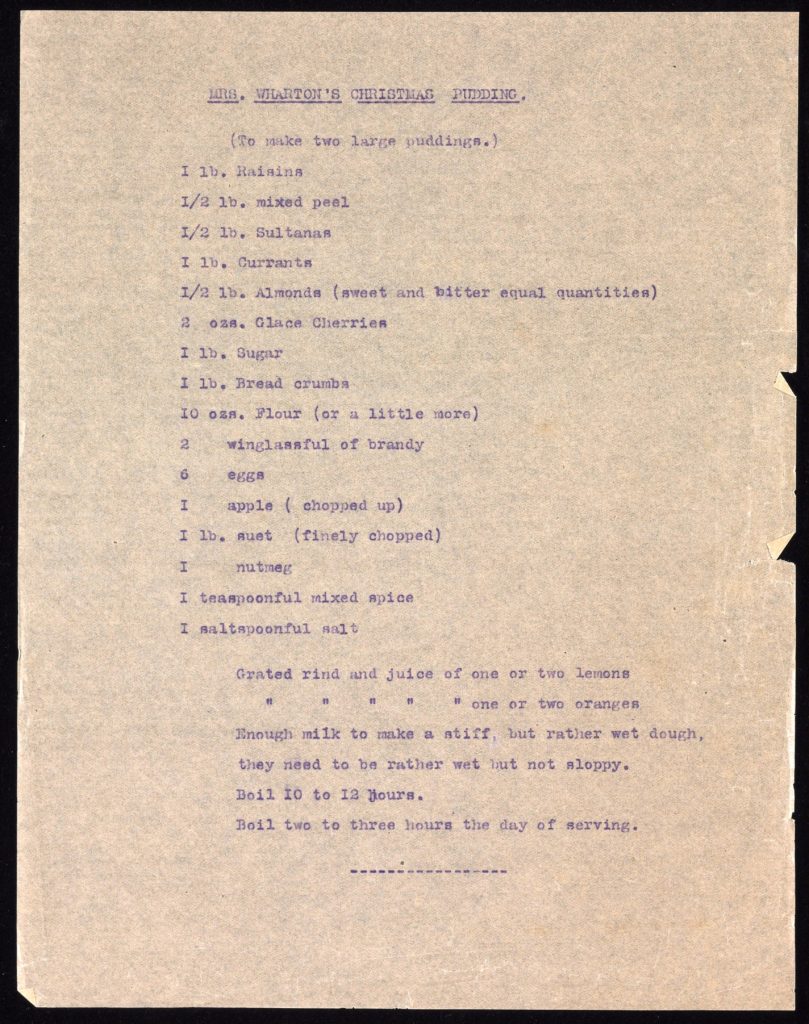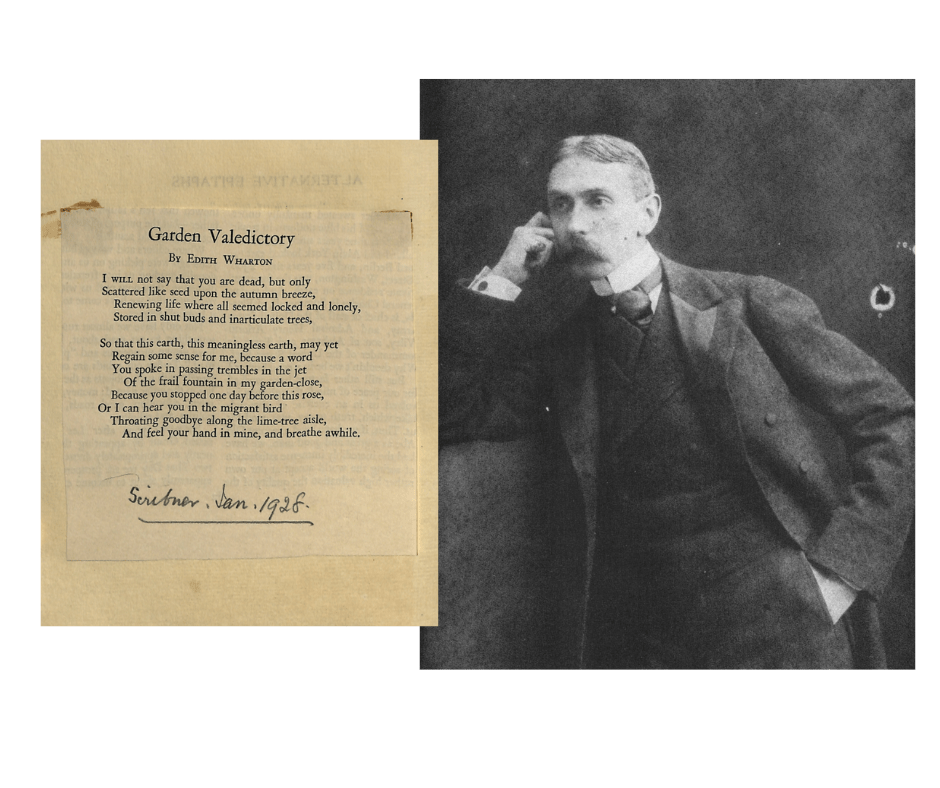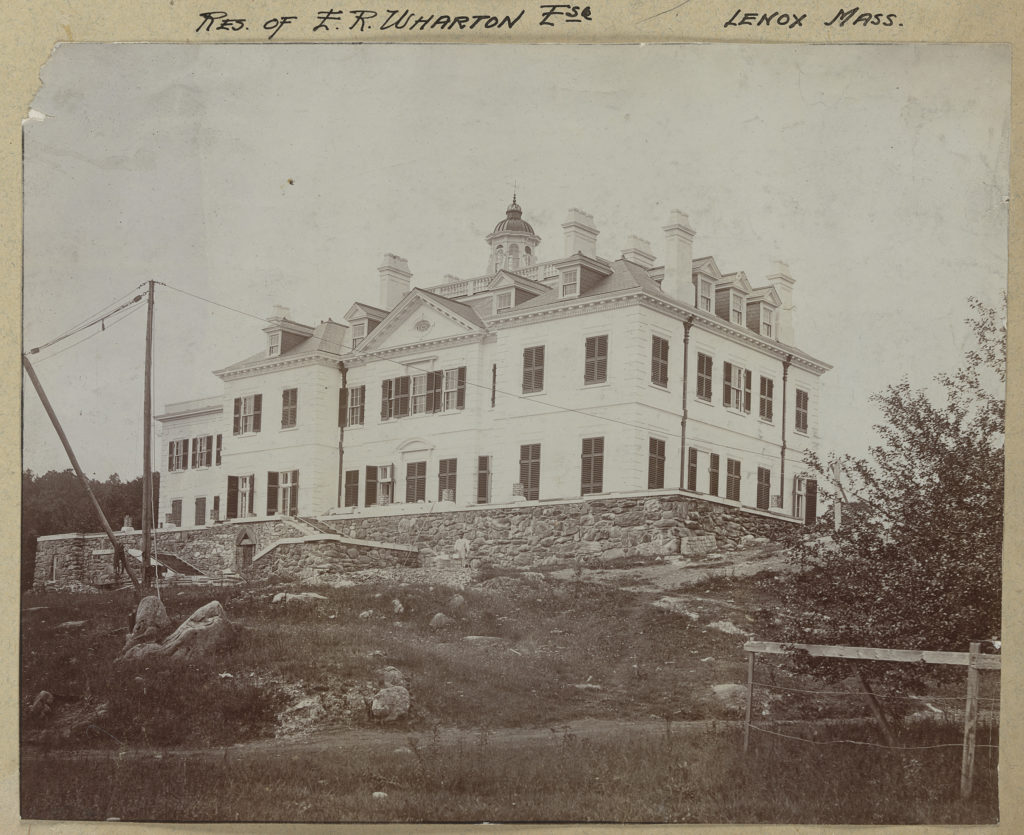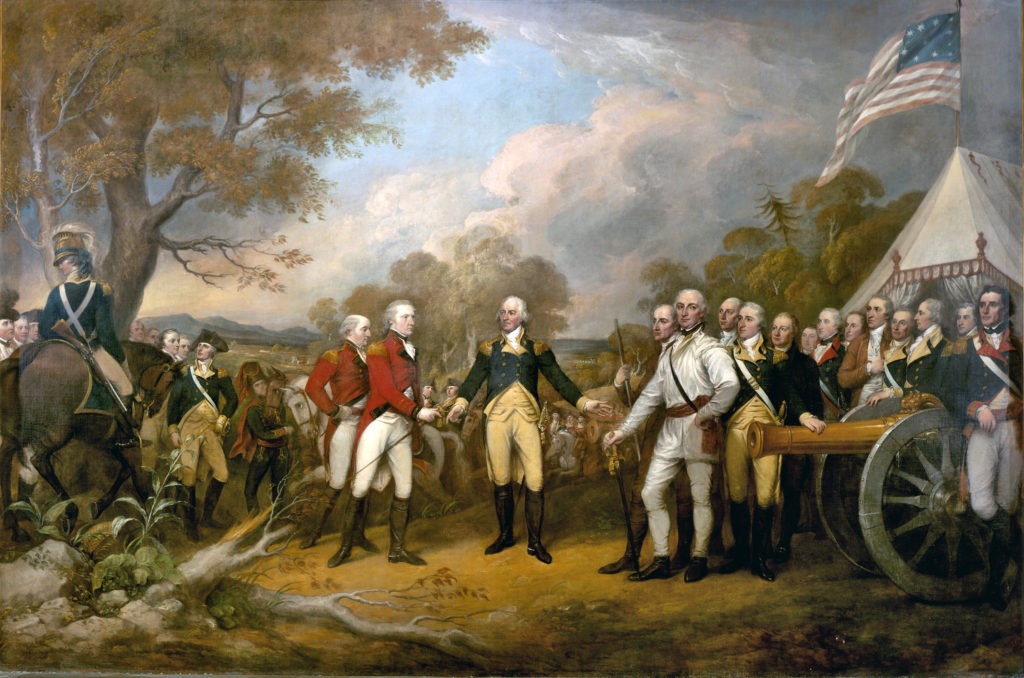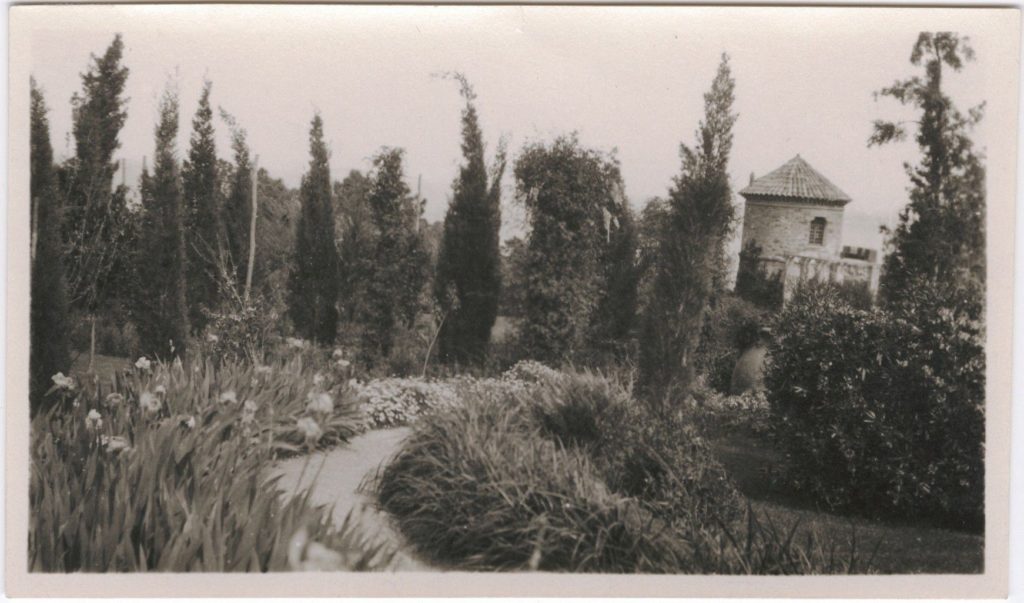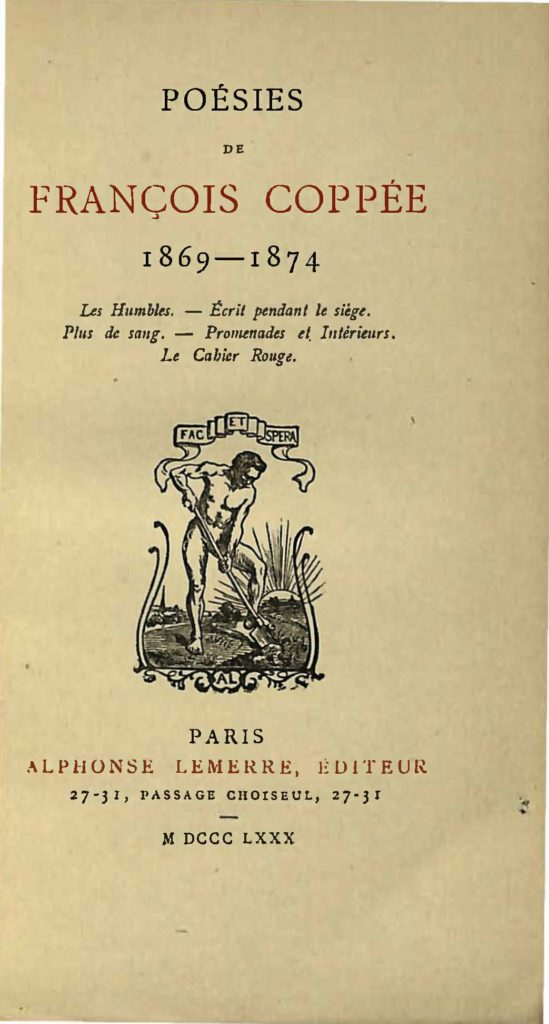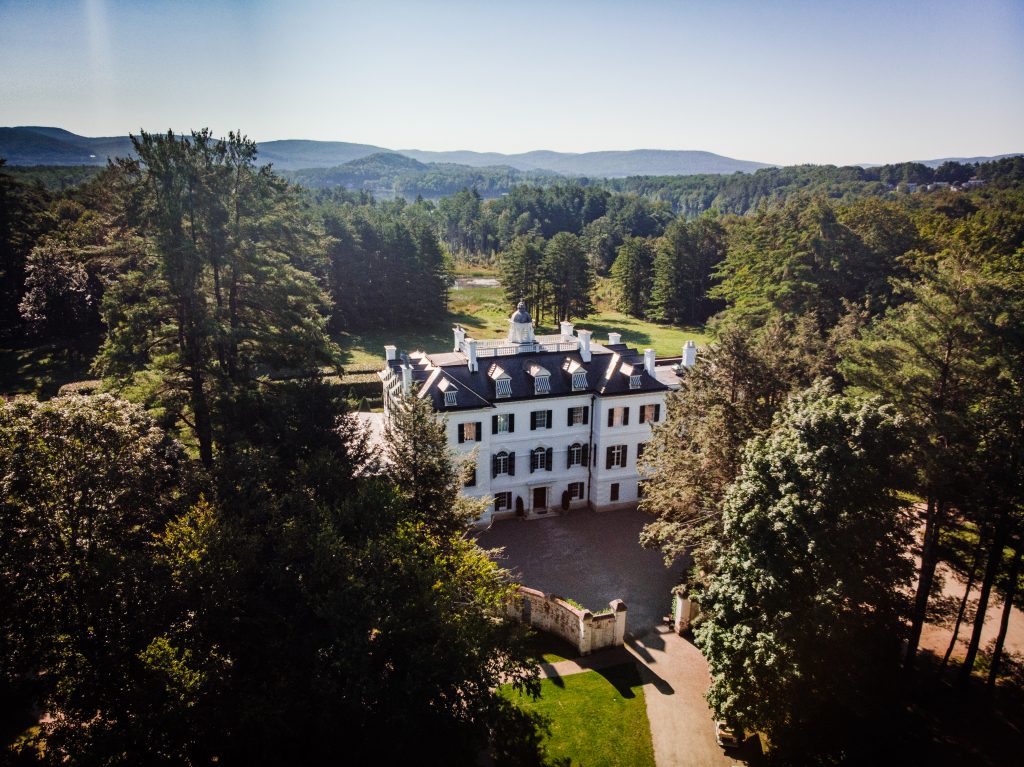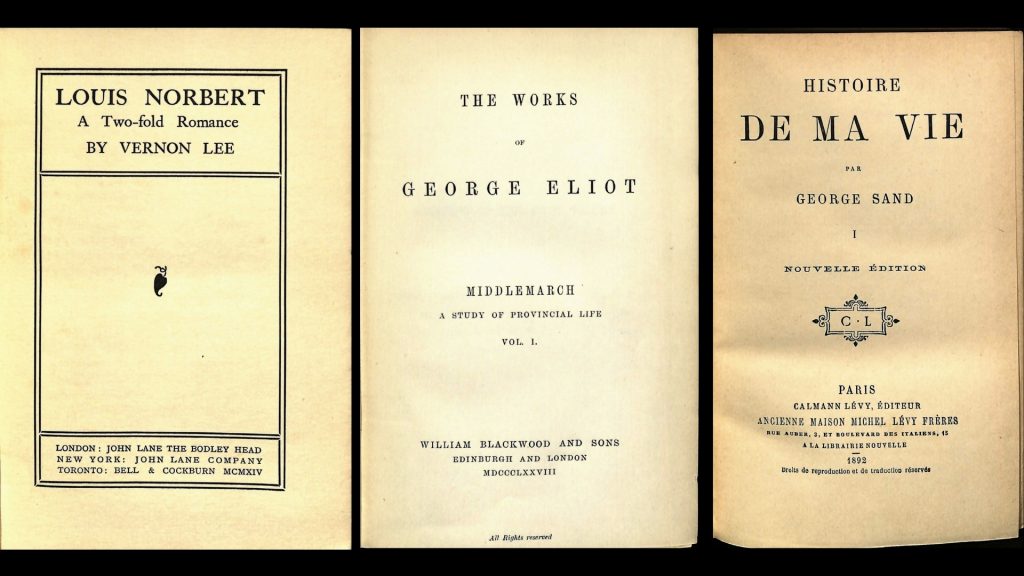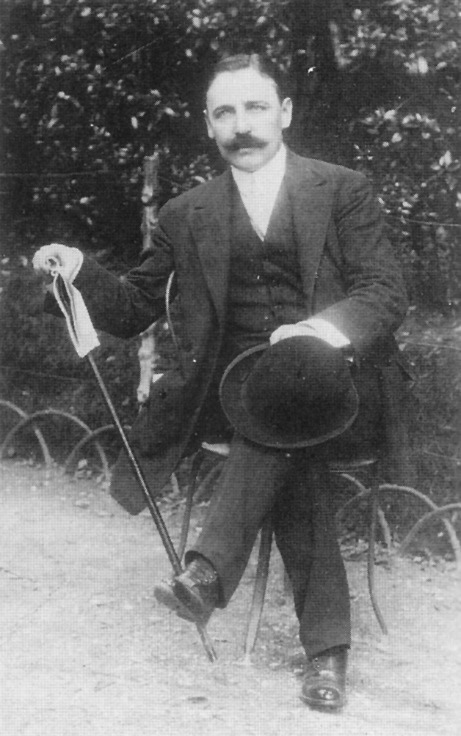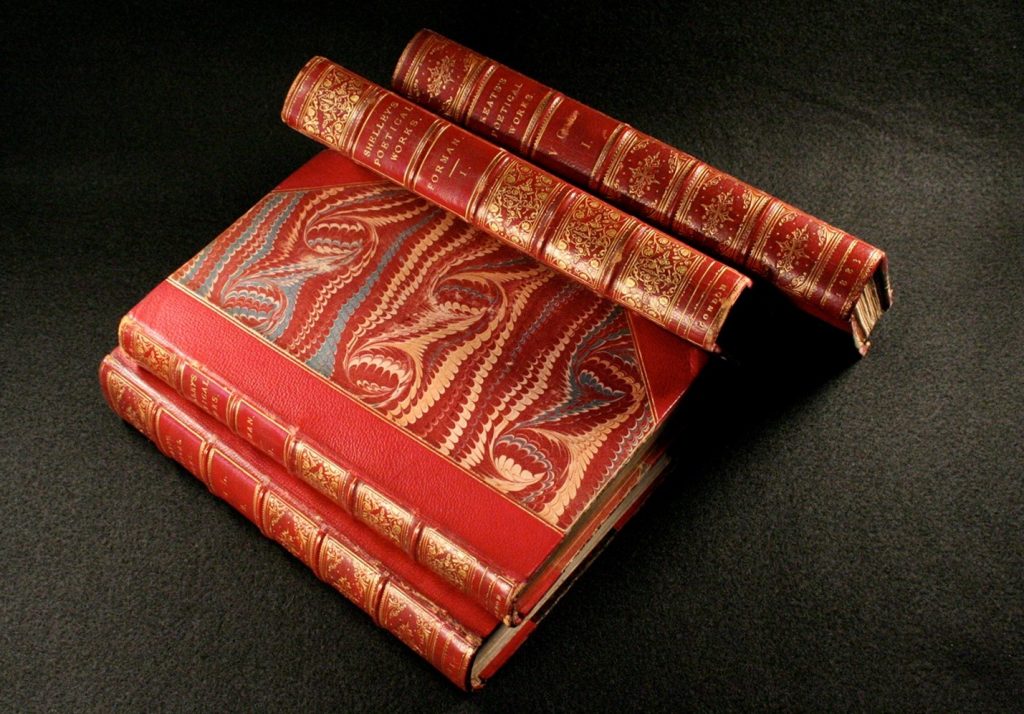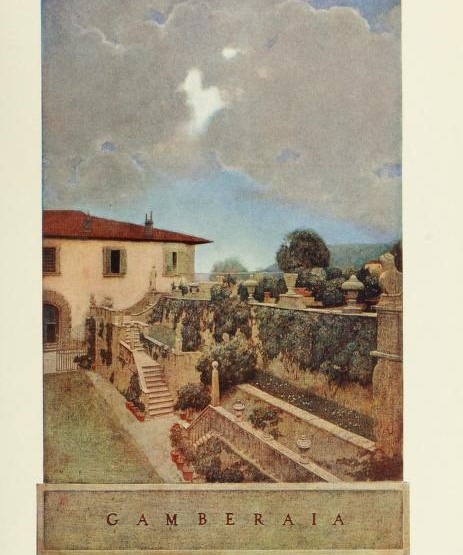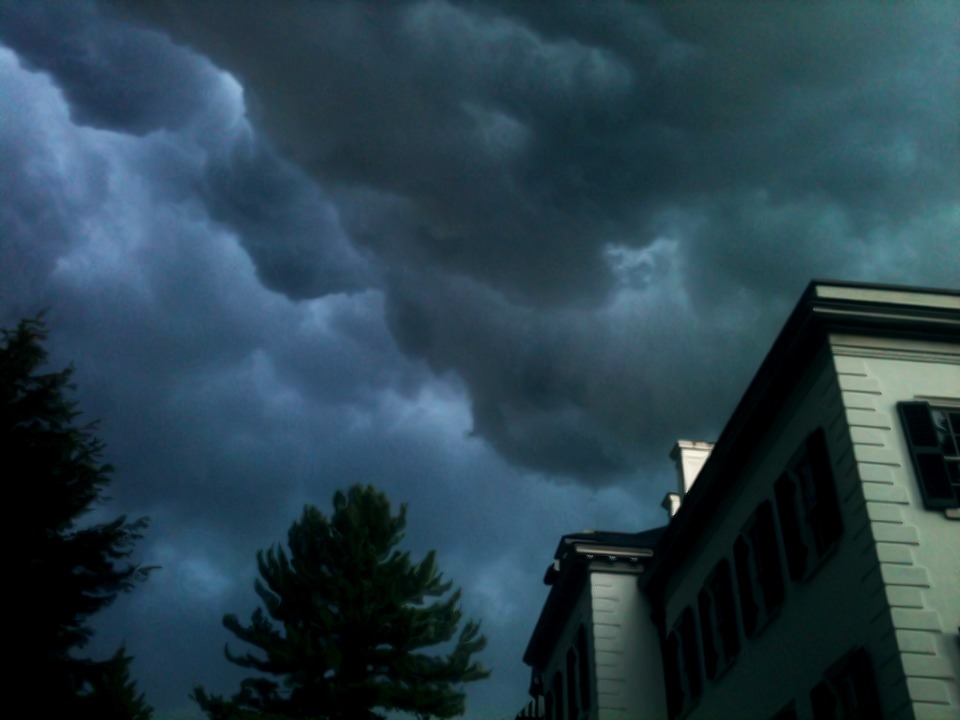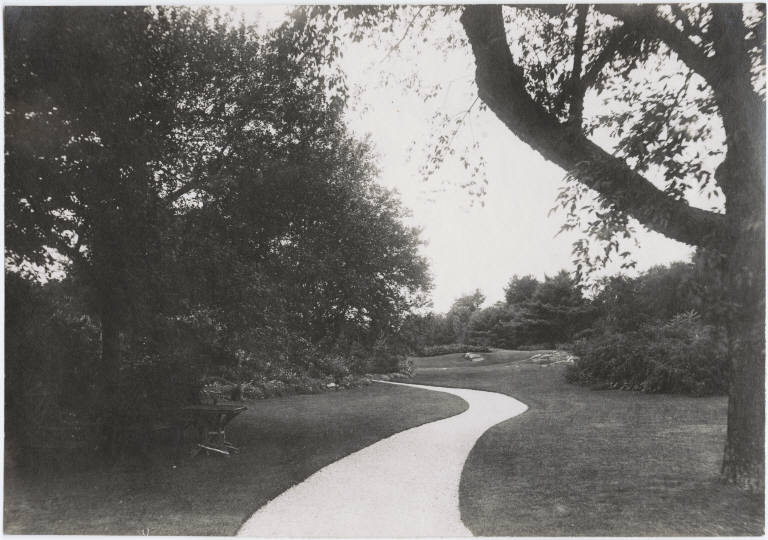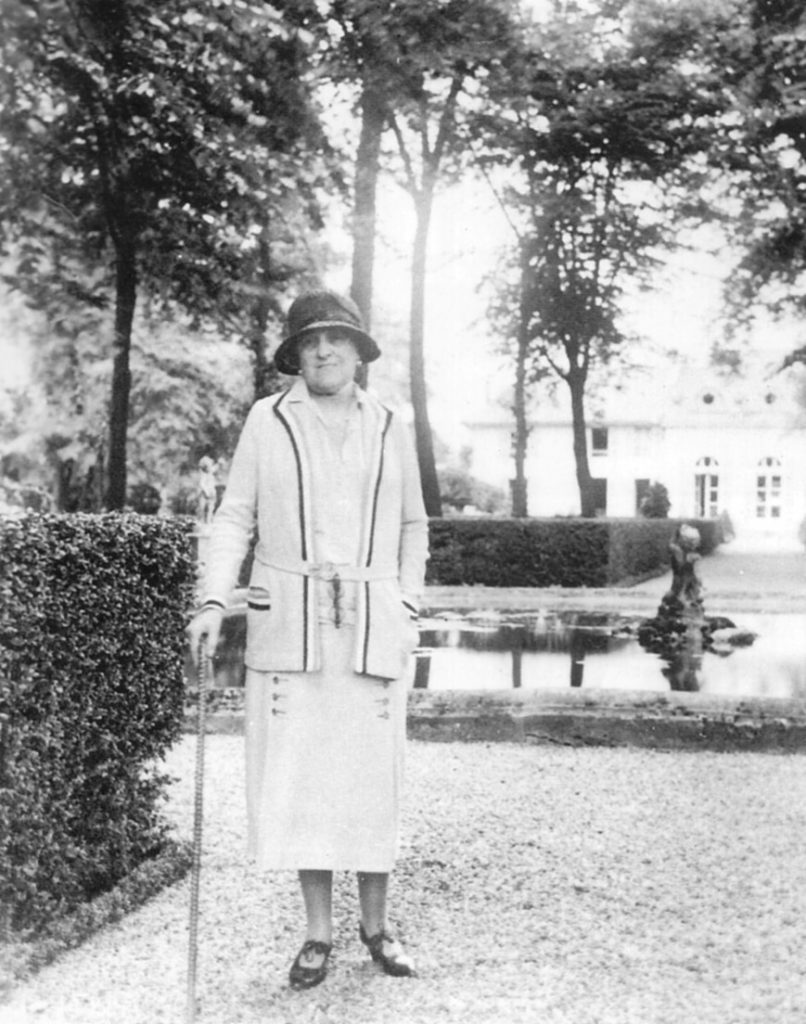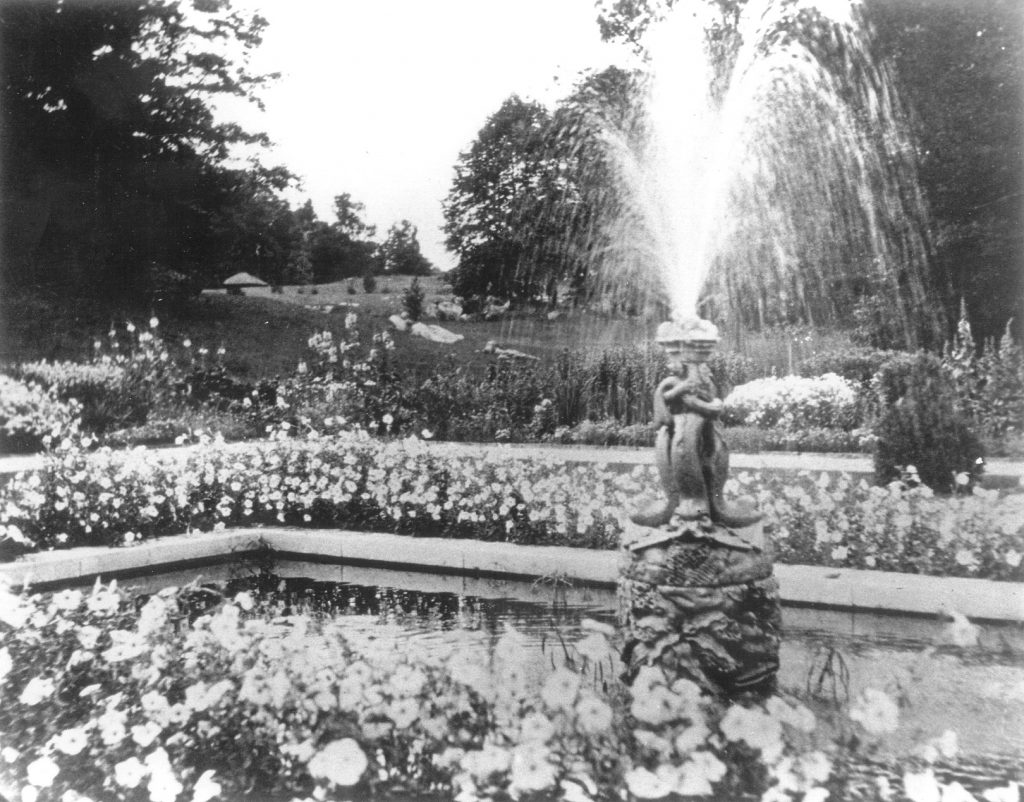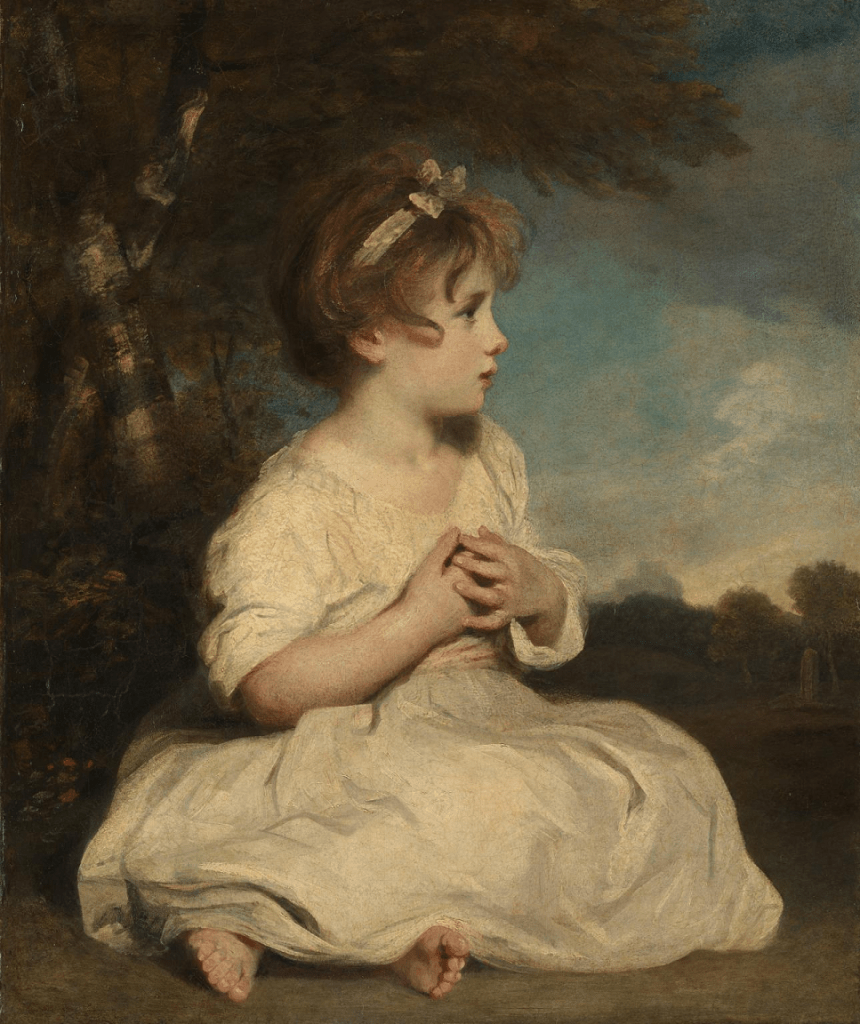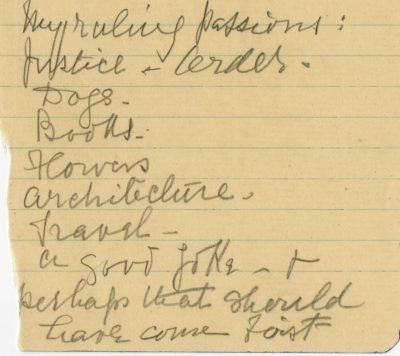The Mount Writes!
Please use these writing prompts to help get your creative juices flowing (and learn a little about Edith Wharton along the way). We hope to spark your imagination and allow you to flex your creative writing skills.
Want to share your response? Email us at info@edithwharton.org and we will post it on our social feeds.
-

Holiday Cheer
“…the garden is so divine already, with everything sprouting after the endless rains, that I can’t feel discouraged, & still believe we shall eat our Xmas pudding under my new-old roof.” – Edith Wharton to Mary Cadwalader Jones, Dec. 4, 1920
Wharton moved into her new home, the Chateau Ste.-Claire in Hyeres, France, just two days before Christmas 1920 and claimed it was “the happiest Xmas I have spent in many a year.” She would continue to spend her winters in the south of France in her converted convent, where Decembers were more mild than at her second home, Pavillon Colombe, just north of Paris. It is fun to imagine Wharton serving her Christmas pudding, a traditional, hearty, British dessert, to her companions in Hyeres with a view of palm trees overlooking the ocean, but enjoy this dish she did, and her recipe still exists to this day.
The Christmas pudding, a concoction of dried fruits, suet, breadcrumbs, nuts, spices, and alcohol, was first served up as a savory dish in the medieval period, often including some sort of meat or meat stock. The figgy pudding evolved into a dessert served after dinner, becoming a symbol of English Christmas tradition by the Victorian period, aided by the likes of Charles Dickens and becoming immortalized in the Christmas tune “We Wish You A Merry Christmas.”
Despite living in southern France, Wharton continued to serve up a wintery Victorian tradition at Christmas time. Do you have any holiday traditions that seem to make more sense in another time or place?
Letter excerpt and image courtesy of Edith Wharton Collection, Yale Collection of American Literature, Beinecke Rare Book and Manuscript Library, Yale University.
Season for Remembrance
I will not say that you are dead, but only
Scattered like seed upon the autumn breeze,
Renewing life where all seemed locked and lonely,
Stored in shut buds and inarticulate trees,
So that this earth, this meaningless earth, may yet
Regain some sense for me, because a word
You spoke in passing trembles in the jet
Of the frail fountain in my garden-close,
Because you stopped one day before this rose,
Or I can hear you in the migrant bird
Throating goodbye along the lime-tree aisle,
And feel your hand in mine, and breathe awhile.Wharton published this poem in Scribner’s Magazine in January 1928, just months after the death of her beloved friend Walter Van Rensselaer Berry the previous October. Wharton and Berry had met as young adults in 1883 in Bar Harbor, Maine. He was from a respectable family (descended from the Van Rensselaers of New York) and was an excellent match for Wharton’s imagination and love of intellectual conversation. After she was married, they lost touch for around thirteen years, after which they began a strong friendship and intellectual partnership. Berry became a trusted, literary confidant throughout her writing career.
Upon his death, Wharton burned most, but not all, existing correspondence between the two, leading many to think they had a romantic or emotional relationship. Furthermore, many years after his death, Wharton called Berry “the love of all my life.” No concrete evidence exists to prove that they had a romantic involvement, but it is clear she valued his opinion more than almost any other person in her social circle and was devasted when he died.
In this poem, the speaker feels the presence of their lost loved one in their Autumn garden. Does the fall season, or a particular plant or flower, remind you of a loved one?

-

Construction of The Mount
“‘The Mount’ is progressing well. We are going to ruin ourselves in terraces, but the effect will be jolly.” – Edith Wharton to Ogden Codman, July 29, 1901, Codman Family Papers Collection, Historic New England
From a wealthy Boston family, Ogden Codman Jr. first became acquainted with the Whartons in Newport. Wharton contracted him to help her renovate their home Land’s End. They shared many of the same design principles, favoring classical lines, symmetry, balance, and proportion and rebelling against Victorian excess. They co-wrote The Decoration of Houses in 1897, which was surprisingly successful and marked Wharton as an expert on design before she was known as a novelist.
After the Whartons purchased property for The Mount in February, 1901, they recruited Codman to design the house. This arrangement only lasted a couple of months due to continuous disagreements, largely related to money. Codman later recalled that the falling out “was entirely due to Teddy who has such a big head & thought he owned the earth.” The project thus fell to Hoppin & Koen, a firm based in New York City but with ties also to Newport. It is their albums that contain rare photos of The Mount under construction.
By January, 1902, Codman was brought back onto the project to design the interiors of The Mount, his relationship with the Whartons somewhat reconciled.
Have you experienced an awkward situation when working with friends or relatives?
The General
“If I have dwelt too long on the career of this model citizen it is because of a secret partiality for him—for his stern high-nosed good looks, his gallantry in war, his love of luxury, his tireless commercial activities. I like above all the abounding energy, the swift adaptability and the joie de vivre which hurried him from one adventure to another, with war, commerce and domesticity (he had two wives and fourteen children) all carried on to the same heroic tune.” -Edith Wharton, A Backward Glance
The “model citizen” Wharton refers to in her autobiography A Backward Glance was Ebenezer Stevens, her great-grandfather on her mother’s side, whose Long Island estate was the inspiration for the name of her home The Mount. Stevens was present at the Boston Tea Party and served in the Continental Army in various artillery units during campaigns at Bunker Hill, Ticonderoga, Saratoga, and Yorktown. He became a Lieutenant Colonel in 1778, and by 1805 was promoted to Major General for the New York State Artillery Corps, defending New York City during the War of 1812. After the Revolution, Stevens became a prominent merchant and member of the city, serving as a founding member and later president of the New England Society in New York.
Wharton’s recollection of her great-grandfather doesn’t mention the often-overlooked backbone of merchant success in the early Republic: slavery. Stevens’s many ships traversed the Triangular Trade, bringing in goods from the Caribbean islands and southern U.S. such as cotton, spices, sugar, molasses, indigo, wine, and cocoa. These commodities were produced by enslaved labor for flourishing markets in the colonies and new United States and were a vital part of the trade networks that trafficked Africans to the Americas. Stevens himself owned at least one enslaved person, an eighteen-year-old woman named Phelia, who was freed in 1808, though slavery remained legal in the state of New York until 1827. For more information on slavery in New York, please click here.
In Wharton’s mind, her great-grandfather was a hero. Do you have any larger-than-life relatives or ancestors? What are they known for in your own family or the wider historical record? Would you like to dig deeper into your family’s history, despite what you might find?
Image: Surrender of General Burgoyne (1821) by John Trumbull, on view in the rotunda of the U.S. capital. Ebenezer Stevens is on the far right of the painting, resting on the artillery.

-

Harbingers of Spring
“It is perfectly beautiful here now … Everything is blooming, and all the nightingales in the world seem to be congregated here. I cannot bear to think [of] leaving next week, but St. Brice is waiting, and I must go.” – Edith Wharton to Mary Cadwalader Jones, April 28, 1921
Wharton wrote the above in a letter to her sister-in-law as she was preparing to leave her winter home, the Château Ste.- Claire in the south of France, for her summer house, Pavillon Colombe, just outside of Paris. At both, just as she did at The Mount, Wharton cultivated stunning gardens, and her letters reveal the meticulous care she poured into them. Wharton was also fond of nightingales, a bird long considered a harbinger of spring. Her poem “Nightingales in Provence” (1926) invokes this symbolism, anticipating the coming of the season and the beauty that change brings.
What place have you resided in or visited which you found hard to leave? What made that particular place so compelling? Describe it in detail.
Photo of Ste.- Claire and quotation courtesy of Edith Wharton Collection, Yale Collection of American Literature, Beinecke Rare Book and Manuscript Library, Yale University
The Awakeners
“By the time I was seventeen, though I had not read every book in my father’s library, I had looked into them all. Those I devoured first were the poets and the few literary critics…. But the books which made the strongest impression on me–doubtless because they reached a part of my mind that no one had thought of arousing–were two shabby volumes unearthed among my brother’s college text-books: an abridgement of Sir William Hamilton’s “History of Philosophy” and a totally forgotten work called “Coppee’s Elements of Logic.” This first introduction to the technique of thinking developed the bony structure about which my vague gelatinous musings could cling and take shape; and Darwin and Pascal, Hamilton And Coppee ranked foremost among my Awakeners.” – Edith Wharton, A Backward Glance (1934)
From an early age, Wharton developed a voracious appetite for reading and knowledge. Throughout her memoir A Backward Glance, she recalls the influence of her father’s library; it was not as expansive as others of their class (his book collection was more limited as was befitting the inheritance of a younger son), yet it still contained thousands of volumes. In this passage, Wharton recalls some of her early “Awakeners,” the writers who had a profound impact on the imaginative trajectory of her life.
Who were some of your favorite writers when you were young? Who were some of your early “Awakeners”? How do they inspire you to this day?
Cover page for François Coppée, Poems: 1869-1874, which Wharton obtained while in Paris in 1881 (courtesy of http://sheilaliming.com/ewl/home.html)

-

Nature's Perspective
I see, O lovely tree, / The earth’s brown breast, o’ergrown / With all sweet blossoms blown; / The hastening ants for me / A friendly circuit make, / And sometimes, for their sake, / Beneath my leaves I hide / A little store of food; / All round, the joyous brook / Of wind-flowers open wide; / The odorous ferns upcurl / Each tenderly-furred frond….
From “In the Forest” by Edith Wharton, published in Selected Poems of Edith Wharton (2019), edited by Irene Goldman-Price
While Earth Day was not recognized until the 1970s, Edith Wharton certainly would have celebrated the Springtime day dedicated to nature. In this particular poem, Wharton imagines a conversation between an oak tree and a violet, as each asks of the other, “What is it that you see?” Not only did Wharton appreciate the natural world, but she was also a steward of it. Her gardens attest to her deep knowledge of plant life, and the location of The Mount invites a stunning view of forest, lake, and mountains. In the U.S. and in France, Wharton chose homes that positioned herself in the midst of natural beauty.
How do you like to celebrate Earth Day? How does the natural world inspire you?
Photo by Tom Tranfaglia for Tricia McCormack Photography
What's In a Name
For Women’s History Month, this prompt highlights the many women writers of the eighteenth and nineteenth centuries who published their works under pseudonyms, or pen names, to conceal their identity for various reasons. One of the most popular reasons for doing so was that it enabled many women to enter the male-dominated profession of published authorship while maintaining their feminine respectability and/or privacy. While some women used classically inspired pseudonyms such as “Constantia” (used by late eighteenth-century American writer Judith Sargent Murray), many others wrote under a male persona. Some of the most influential writers of the nineteenth and early twentieth centuries, including Vernon Lee, George Eliot, and George Sand (whose real names were Violet Paget, Mary Ann Evans, and Amantine Lucile Aurore Dupin, respectively), used male pen names. These women’s numerous works are an invaluable addition to Wharton’s own library, especially those of Vernon Lee, whom Wharton befriended and admired greatly.
This was a tradition Wharton emulated in her earliest of writing days, as she chose the pen name David Olivieri for a novella she wrote in her mid-teens, published in 1977 posthumously as Fast and Loose. If you had to choose a pen name to write under, what would it be and why?
Title Pages for works by Violet Paget, Mary Ann Evans, and Amantine Lucile Aurore Dupin. Digitized from Edith Wharton’s Library, http://sheilaliming.com/ewl/about.html.

-

The Season for Love
During her lifetime, Edith Wharton was careful never to reveal details about her romantic life. However, she maintained a diary from 1907 to 1908, which documents her love affair with journalist Morton Fullerton. This diary, which she called “The Life Apart,” was meant for no one’s eyes but hers and Fullerton’s until, as stipulated to her literary executors, she had been dead for thirty years.
Happiness is a theme that emerges throughout Wharton’s diary, explored as an experience that had eluded her until Fullerton came into her life. However, this romantic happiness was uncertain and tentative, largely due to Fullerton’s mercurial lifestyle. Though intelligent, handsome, and exciting, he was an elusive lover. In February of 1908, she wrote, “Then we went to Herblay. Such a cold, sad winter day, with the wind beating the bare trees, & a leaden sieve between brown banks! In the church it was still & dim, & in the shadowy corner where I sat while you talked with the cure, a veiled figure stole up & looked at me a moment. Was its name Happiness? I dared not lift the veil….”
In this particular passage, Wharton personifies Happiness as a figure she is hesitant to disturb for fear of it disappearing. Have you ever thought of an emotion as a character? What role did that emotion play in your life?
Quoted text excerpted from “‘The Life Apart’: Text and Contexts of Edith Wharton’s Love Diary” by Kenneth M. Price and Phyllis McBride, 1994
Photo of Morton Fullerton courtesy of Edith Wharton Collection. Yale Collection of American Literature, Beinecke Rare Book and Manuscript Library, Yale University
Memorable Birthday Presents
“And there was one supreme day when, my mother having despairingly asked our old literary advisor, Mr. North at Scribner’s, ‘what she could give the child for her birthday,’ I woke to find beside my bed Buxton Foreman’s great editions of Keats and Shelley! Then the gates of the realms of gold swung wide, and from that day to this I don’t believe I was ever again, in my inmost self, wholly lonely or unhappy.” –Edith Wharton, A Backward Glance (1934), page 71.
This writing prompt draws inspiration from Wharton’s birthday, January 24, 1862. Wharton received copies of Shelley’s Poetical Works and Keats’s Poetical Works from her mother as a birthday present when she was in her late teens. For Wharton, this gift enabled “the gates of the realms of gold” to be “swung wide” and affected her life profoundly. These volumes helped form the basis of Wharton’s own book collection, influenced by the time she spent in her father’s library.
Reflect on a particularly memorable birthday present you received when you were young. What made it so special? Do you still have it?

-

Beautiful White Silence
“How I miss that beautiful white silence that enclosed us at the Mount, & enabled me to possess my soul!” –Edith Wharton to Sara Norton, December 30, 1904, Edith Wharton Collection. Yale Collection of American Literature. Beinecke Rare Book and Manuscript Library.
From her townhouse in New York City, in December of 1904, Wharton was feverishly trying to finish The House of Mirth to meet the new serialization schedule for Scribner’s. Lily Bart’s slow social decline in the same city certainly occupied Wharton’s mind in a much different way than the calm and wintery serenity of Lenox.
What is your favorite place to experience the “beautiful white silence” that winter brings? Where are your favorite wintery views? Where do you feel at peace this time of year?
Great Effects
“This is the villa of the Gamberaia at Settignano. Till its recent purchase, the Gamberaia had for many years been let out in lodgings for the summer, and it doubtless owes to this obscure fate the complete preservation of its garden-plan. Before the recent alterations made in its gardens, it was doubly interesting from its unchanged condition, and from the fact that, even in Italy, where small and irregular pieces of ground were so often utilized with marvellous skill, it was probably the most perfect example of the art of producing a great effect on a small scale.” –Edith Wharton, Italian Villas and Their Gardens, page 41.
Italian Villas and Their Gardens was published in November of 1904. This particular villa Wharton admires for its ability in “producing a great effect on a small scale.”
Think of a scene you have encountered invoking a similar feeling. Were you observing nature, architecture, the city, the country? What time of year? Where were you when you came across this scene? What brought you to it? What “great effect” did it have on you?

-

Ghostly Tales
“Oh, Dorsetshire’s full of ghosts, you know.”
-Edith Wharton, “Afterward,” published 1910
The days are growing shorter and colder, which means that the season of spirits and spookiness is very much upon us. Not only was Edith Wharton a fan of ghost stories, but she penned many herself. “Afterward” is about a woman named Mary and her husband who move from America to Dorsetshire, England. The couple is determined to purchase a home that is haunted, but they end up getting more than they bargained for.
Take a stab at writing your own ghostly tale! We have many stories to tell here, for The Mount is full of ghosts, you know…
Photo taken by Robert Oakes, ghost tour guide
Moving In
“We have been in the new house ten days, & have enjoyed every minute of it. The views are exquisite, & it is all so still & sylvan—I have never seen the Michaelmas daisies as beautiful as this year—the lanes are purple.” –Edith Wharton to Sara Norton, September 30, 1902, Edith Wharton Collection. Yale Collection of American Literature. Beinecke Rare Book and Manuscript Library.
Edith and Teddy Wharton moved into their newly-built home, The Mount, in September of 1902. She reflected on this new home with happiness and contentment, appreciating the beauty of the surrounding landscape. The Mount in September is truly spectacular, as many of us can affirm. Try to recall your feelings surrounding your first couple of weeks spent in a new home.
What time of year did you move, and how did that impact the transition?

-

Happiness in Old Age
Edith Wharton died August 11, 1937 at the age of 75 in Saint-Brice-sous-Forêt, France. For this month’s writing prompt, we point you to this uplifting quotation, found in one of the opening paragraphs of her autobiography A Backward Glance, published in 1934:
“In spite of illness, in spite even of the arch-enemy sorrow, one can remain alive long past the usual date of disintegration if one is unafraid of change, insatiable in intellectual curiosity, interested in big things, and happy in small ways.”
This recipe for a long life certainly rang true for Wharton, whose love of architecture, gardens, history, travel, writing, and her dogs kept her busy until the end of her days.
What are some ways in which you are “insatiable in intellectual curiosity, interested in big things, and happy in small ways”? What would your recipe for long life look like?
Summer's Heat
Edith Wharton wrote to Eunice Maynard in July of 1911 from The Mount, “I am a little stupefied by the heat – we have reached 94° here, & the ripe gooseberries in the garden yesterday were literally burnt up by the sun!” Edith Wharton Collection. Yale Collection of American Literature. Beinecke Rare Book and Manuscript Library.
Summer is most definitely upon us! Reflect on a time you felt “a little stupefied by the heat.” Where were you? How was the heat impacting your senses? What about your surroundings?

-

An Age of Innocence
The title for The Age of Innocence is drawn from the Sir Joshua Reynolds painting of the same name. Wharton often drew inspiration from art; many of her poems are ekphrastic poems, i.e. poems about particular works of art.
Choose a work of art and write a short poem or prose piece about your response to it.
Ruling Passions
“My ruling passions:
Justice
Order
Dogs
Books
Flowers
Architecture
Travel
A good joke & perhaps that should have come first”
-Edith Wharton, from her personal diaryWhat are your ruling passions? What should could come first on your list? Take inspiration for Wharton’s passions and see where it takes you.


